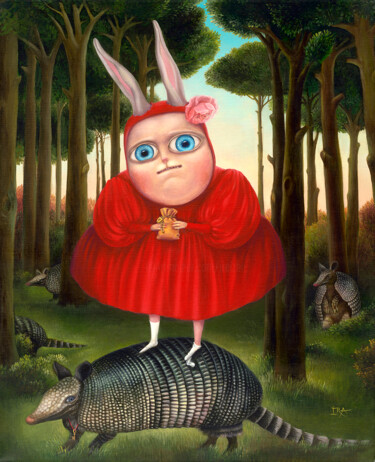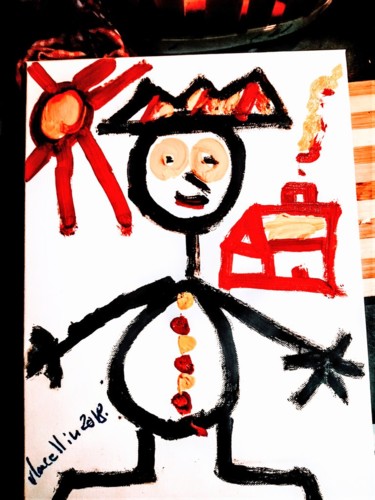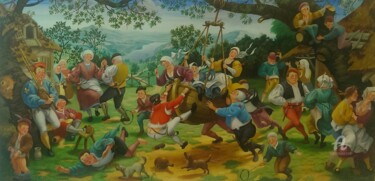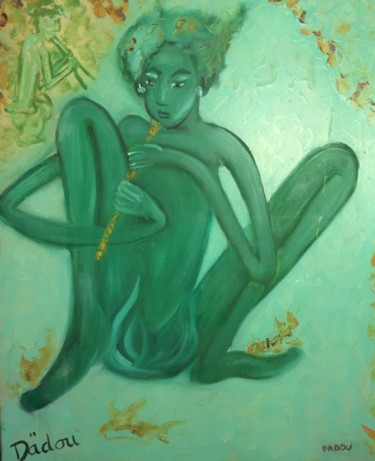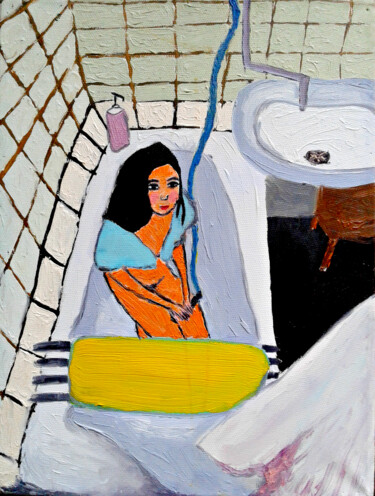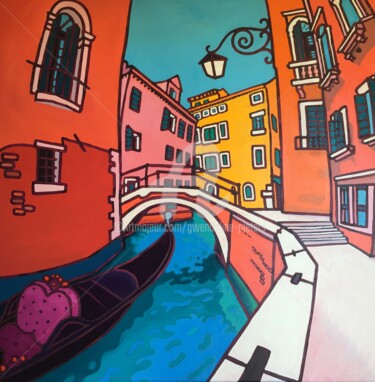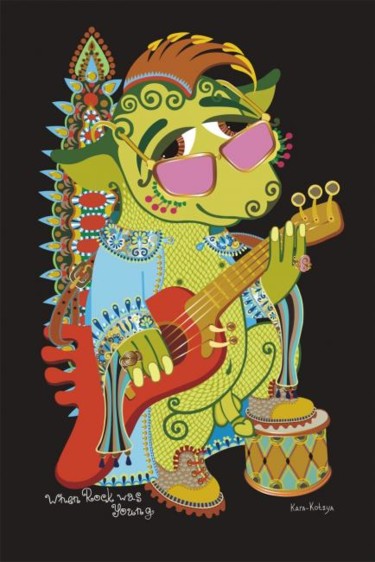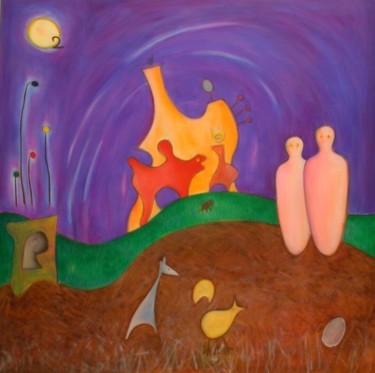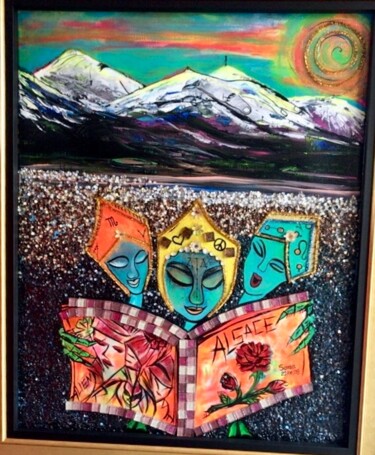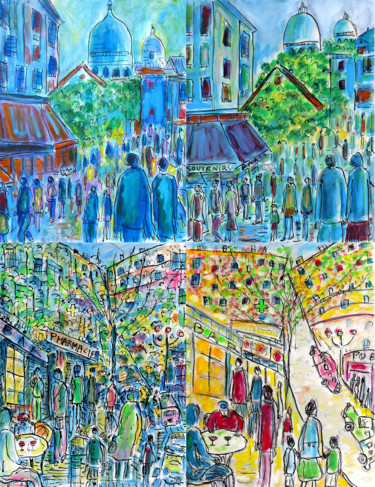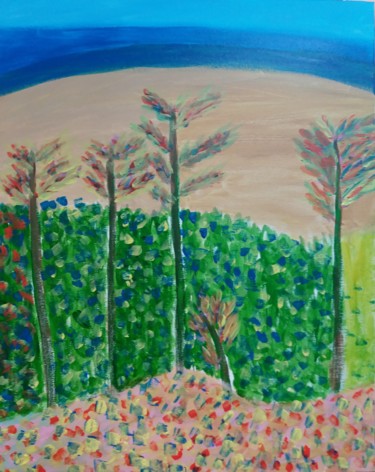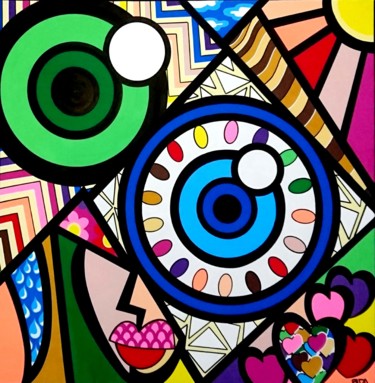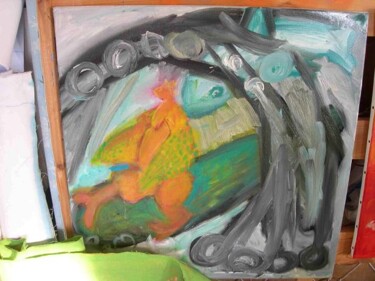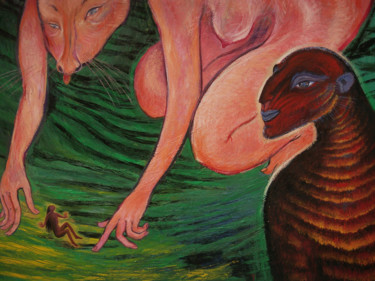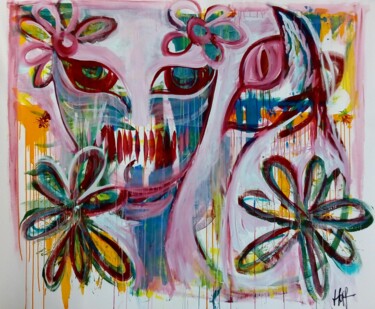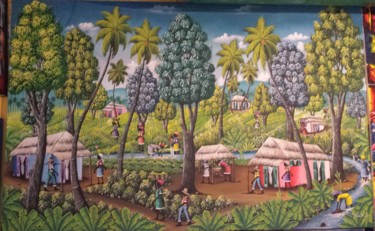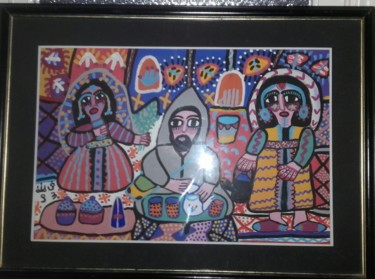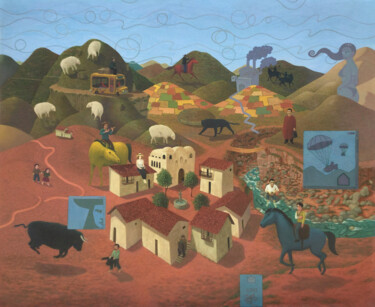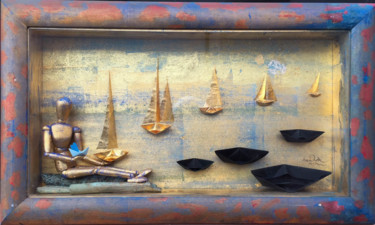
100 Originele kunstwerken, limited editions en prints:
Hoe Naïeve Kunst stijl definiëren?
Wat is naïeve kunst?
Wat is naïeve kunst en hoe definieer je naïeve kunst? Naafschilderen is een kunststijl die is ontstaan door kunstenaars als Henri Rousseau, die niet veel van kunst wisten. Meestal wordt naafkunst gedefinieerd als beeldende kunst gemaakt door iemand die niet de training en opleiding heeft gehad die een professionele kunstenaar wel heeft. Wanneer een professionele artiest deze stijl probeert te kopiëren, wordt dit vaak 'primitivisme' genoemd.
Wat is de definitie van naïeve kunst?
Nave-kunst wordt meestal gedefinieerd als beeldende kunst gemaakt door iemand die niet de formele training en opleiding heeft genoten die een professionele kunstenaar heeft (in anatomie, kunstgeschiedenis, techniek, perspectief, manieren van kijken). Wanneer een getrainde kunstenaar deze stijl probeert te kopiëren, wordt dit soms primitivisme, pseudo-beukkunst of nepbeukkunst genoemd.
In tegenstelling tot volkskunst hoeft naafkunst niet uit een specifieke populaire culturele context of traditie te komen. In feite is het, in ieder geval in geavanceerde economieën en sinds de drukrevolutie, onmogelijk om niets te weten over de lokale kunsttraditie, die zich heeft verspreid via populaire prenten en andere media. Naïeve kunstenaars zijn op de hoogte van 'fine art'-conventies zoals grafisch perspectief en compositorische conventies, maar ze kunnen of gebruiken ze niet ten volle. Outsider-kunst (ook wel "art brut" genoemd) verwijst daarentegen naar werken met een vergelijkbare achtergrond, maar die weinig te maken hebben met de reguliere kunstwereld.
Nave-kunst staat erom bekend eenvoudig en eerlijk te zijn als een kind, en daarom wordt het vaak gekopieerd. Dit soort schilderijen heeft meestal een vlakke tekenstijl en een eenvoudige manier om diepte te tonen. Henri Rousseau, een Franse post-impressionist die leefde van 1844 tot 1910 en werd ontdekt door Pablo Picasso, was een van de belangrijkste schilders van 'naïeve kunst'.
Er is enige onenigheid geweest over wat de term betekent en waar deze "eindigt" met andere termen zoals volkskunst en outsiderkunst. Nave-kunst wordt meestal gebruikt om kunstwerken te beschrijven die zijn gemaakt door autodidactische kunstenaars, zoals schilderijen en sculpturen. Volkskunst verwijst daarentegen naar dingen die in het dagelijks leven kunnen worden gebruikt. Maar over dit verschil is gediscussieerd. "Provinciaal" is een ander woord dat kan worden gebruikt, vooral voor schilderijen en gebouwen. Het wordt meestal gebruikt om werk te beschrijven van kunstenaars die een traditionele opleiding hebben gevolgd, maar wiens werk per ongeluk niet voldoet aan de grootstedelijke of gerechtelijke normen.
Wat zijn de kenmerken van naïeve kunst?
Mensen denken vaak aan naafkunst als werk van een buitenstaander die geen (of niet veel) opleiding of diploma heeft gehad. Voor de 20e eeuw was dit waar, maar nu zijn er scholen voor naïeve kunst. Naïeve kunst is nu een volledig erkende vorm van kunst die in galerijen over de hele wereld te zien is.
De kenmerken van de naafkunst passen niet goed bij de formele aspecten van de schilderkunst, vooral wanneer de drie regels van het perspectief niet worden gevolgd (zoals beschreven door de progressieve schilders van de renaissance):
- De omvang van de dingen wordt kleiner naarmate ze verder weg komen,
- Kleuren veranderen naarmate je verder weg komt, -Details worden minder duidelijk naarmate je verder weg komt,
Dit zijn de resultaten:
- De effecten van perspectief zijn geometrisch verkeerd (ze lijken op kindertekeningen of schilderijen uit de Middeleeuwen, maar daar stopt de vergelijking).
- Sterk patroongebruik, ongeraffineerde kleur op alle vlakken van de compositie, zonder verzwakking in de achtergrond. -Gelijke aandacht voor details, inclusief die op de achtergrond die moeten worden overschaduwd.
Mensen zeggen dat naïeve kunst gemakkelijk te herkennen is omdat ze niet ingewikkeld is. Het is echter zo populair en bekend geworden dat veel voorbeelden 'pseudo-naïef' kunnen worden genoemd.
"Pseudo nave" of "faux nave" kunst is het werk van een kunstenaar die meer imiterend of zelfbewust is en wiens werk er meer gekopieerd dan origineel uitziet. "Nave" kunst is het werk van een kunstenaar die niet naar de kunstacademie of academie ging, zoals Henri Rousseau of Alfred Wallis.
Aangezien autodidactisme in de moderne tijd populairder is geworden als manier om te leren, is strikte naïviteit bij moderne kunstenaars waarschijnlijk niet aan te treffen. Levende kunstenaars houden niet altijd van naïeve categorisaties, maar dit zal waarschijnlijk veranderen naarmate er meer waardige signalen bekend worden. Er zijn nu musea voor naïeve kunst in Kecskemét, Hongarije; Kovaica, Servië; Riga, Letland; Jaén, Spanje; Rio de Janeiro, Brazilië; Vicq, Frankrijk; en Parijs. Gary Bunt, Lyle Carbajal, Gabe Langholtz, Gigi Mills, Barbara Olsen, Paine Proffitt en Alain Thomas zijn allemaal Engelssprekende levende kunstenaars die toegeven een naïeve stijl te hebben.
"Primitieve kunst" is een andere term die mensen die geen kunst hebben gestudeerd vaak gebruiken om het te beschrijven. Historisch gezien is het echter meer gebruikt om kunst te beschrijven uit culturen die de westerse academische wereld sociaal of technologisch als 'primitief' heeft beschouwd, zoals Indiaanse, sub-Sahara-Afrikaanse en Pacifische eilandkunst (zie Tribale kunst). Dit is anders dan de door 'primitieven' geïnspireerde, zelfbewuste beweging die 'primitivisme' wordt genoemd. Volkskunst is een andere term die vergelijkbaar is met schipkunst, maar niet hetzelfde.
Er zijn ook de termen 'navisme' en 'primitivisme', die meestal worden gebruikt om professionele schilders te beschrijven die nave-kunst als hun stijl gebruiken (zoals Paul Gauguin, Mikhail Larionov, Paul Klee).
Wat zijn de kenmerken van naïeve schilderijen?
Nave-kunst wordt soms gebruikt om kunst te beschrijven die is gemaakt door mensen zonder professionele opleiding of diploma's. Voor de 20e eeuw was dit waar, maar nu zijn er academies voor schipschilderkunst. Nu is naïeve kunst een bekende vorm van kunst die in galerieën over de hele wereld te zien is. De formele delen van de schilderkunst lijken vreemd genoeg op de dingen waaruit de naafkunst bestaat, vooral als het gaat om het niet volgen van de drie regels van perspectief.
-Naarmate dingen verder weg komen, worden ze kleiner.
-Als u een kleur verlaat, wordt deze minder levendig.
-Als je weggaat, worden details minder duidelijk.
Een van de resultaten is dat de effecten van perspectief verkeerd zijn vanuit geometrisch oogpunt. Er is geen verzwakking van de achtergrond in de plannen van de compositie en er zijn veel patronen. Aan alle details is evenveel zorg besteed, zelfs aan de details op de achtergrond die donkerder zouden moeten zijn.
Men zegt dat naafkunst gemakkelijk te herkennen is omdat ze niet veel details bevat. Maar omdat het zo'n bekende stijl is geworden, kunnen veel stukken in de categorieën pseudo-beuk of primitivisme worden geplaatst. Autodidactisme wordt steeds populairder als een manier om te leren, dus strikte naïviteit zie je tegenwoordig niet vaak bij kunstenaars.
Levende kunstenaars accepteren misschien niet altijd eenvoudige categorisaties, maar dit zal waarschijnlijk veranderen naarmate er meer waardige signalen beschikbaar komen.
Discover contemporary artworks on Artmajeur
Contemporary art is a vibrant constellation of artistic expressions. This creative universe encompasses a wide array of mediums, from paintings, sculpture, and photography to drawing, printmaking, textile art, and digital art, each medium a star shining with its own distinct radiance. Artists use diverse supports and materials to bring their visions to life, such as canvas, wood, metal, and even innovative digital canvases for the creation of virtual masterpieces.
A contemporary painting, for instance, may weave its story through the masterful strokes of acrylic or oil, while a contemporary sculpture might sing its song in the language of stone, bronze, or found objects. The photographic arts capture and manipulate light to produce striking images, while printmaking employs techniques like lithography and screen-printing to produce multiples of a single, impactful image. Textile art plays with fabrics and fibers, whereas digital art pushes the boundaries of creation with innovative technology.
The allure of contemporary art lies in its boundary-pushing nature, its relentless quest for experimentation and its constant reflection of the evolving human experience. This boundless creativity, coupled with its strong social and personal commentary, makes every piece of contemporary art a unique emblem of its time, a mirror held up to the realities and dreams of our complex world. It whispers to us, moves us, provokes thought, and kindles a deep emotional response, stirring the soul of anyone willing to listen. It is, indeed, the language of emotions and ideas, spoken in the dialect of our era.

©2019 Ivan Hor
Origins and history of contemporary art
The story of contemporary art unfolds in the mid-20th century, marked by seismic shifts in artistic expression. Post-World War II, around the 1950s and 1960s, artists began experimenting beyond traditional confines, challenging the norms of what art could be. This revolutionary epoch birthed myriad new movements and artistic forms such as abstract expressionism, pop art, and minimalism. Paintings, once confined by realism, embraced abstraction, as artists used color and form to express emotions and ideas. Notable periods like the advent of pop art in the late 1950s and early 1960s saw artworks mimicking popular culture and mass media, reflecting society’s shifting focus.
The sculptural arts, too, witnessed a metamorphosis. Sculptors started to experiment with new materials and forms, often creating artworks that interacted with the viewer and the surrounding space, fostering a sense of engagement. Drawing, a timeless practice, also evolved, with artists incorporating innovative techniques and concepts to redefine its role in contemporary art.
Photography, a relatively new medium, emerged as a powerful tool in the contemporary art landscape. Born in the 19th century, it truly came into its own in the latter half of the 20th century, blurring the lines between fine art and documentation. Printmaking, a practice dating back to ancient times, saw renewed interest and experimentation with techniques like lithography, etching, and screen printing gaining prominence.
The realm of textile art expanded dramatically, as artists began to appreciate the versatility and tactile quality of fabric and fibers. Artists began using textiles to challenge the boundaries between fine art, craft, and design.
The dawn of digital technology in the late 20th century heralded a new age for contemporary art. Digital art emerged as artists started leveraging new technologies to create immersive, interactive experiences, often blurring the line between the virtual and the physical world.
Through these transformative periods, the essence of contemporary art has remained the same: a dynamic, evolving reflection of the times we live in, continually pushing boundaries and embracing the new, always questioning, always exploring.
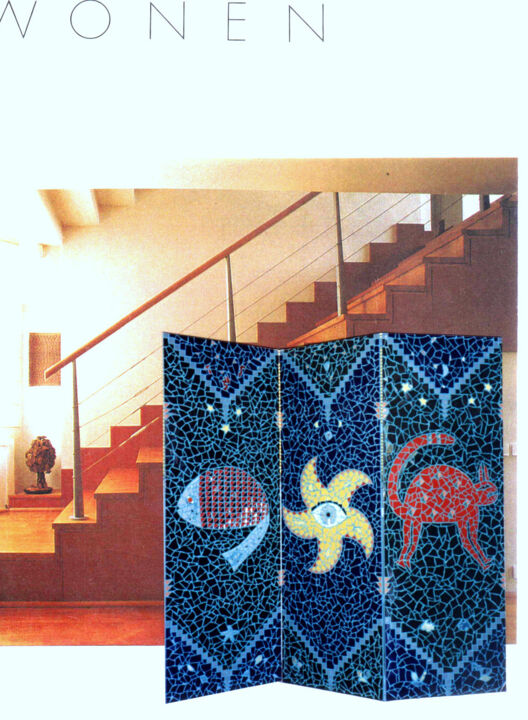
©1990 Odile Maffone
Evolutions of theses contemporary works in the art market
As we navigate through the 21st century, the dynamic landscape of contemporary art continues to evolve and expand, reflecting our ever-changing world. Contemporary paintings, once primarily confined to two-dimensional canvases, now embrace a multitude of forms and techniques, ranging from mixed media installations to digital creations, each piece a rich a weaving of thoughts, emotions, and narratives. Sculpture, too, has ventured far beyond traditional stone and bronze, with artists incorporating light, sound, and even motion, embodying the ephemerality and flux of the modern world.
Photography, in the hands of contemporary artists, has expanded its horizons, seamlessly blending with digital technology to create breathtaking imagery that challenges our perception of reality. Drawing, as well, has transcended the borders of paper, incorporating multimedia elements and exploratory techniques to redefine its role in the artistic discourse. Printmaking continues to flourish, with contemporary artists using traditional methods in innovative ways to deliver potent social and personal commentaries.
Textile art, once considered a craft, now holds a prominent place in the contemporary art world, with artists using it to explore issues of identity, tradition, and cultural heritage. Meanwhile, digital art, the newest member of the contemporary art family, has revolutionized the way we create and interact with art, presenting immersive experiences that blur the boundary between the virtual and the physical.
These diverse forms of contemporary art hold significant value in the current art market, not only due to their aesthetic appeal but also their ability to encapsulate and communicate complex ideas and emotions. Collectors, curators, and art lovers worldwide seek these works, drawn to their inherent dynamism, their innovative use of materials, and their eloquent expressions of our shared human experience. As a testimonial to our times, these contemporary artworks encapsulate the pulse of our society and the resonance of individual voices, forever etching our collective narrative into the annals of art history.
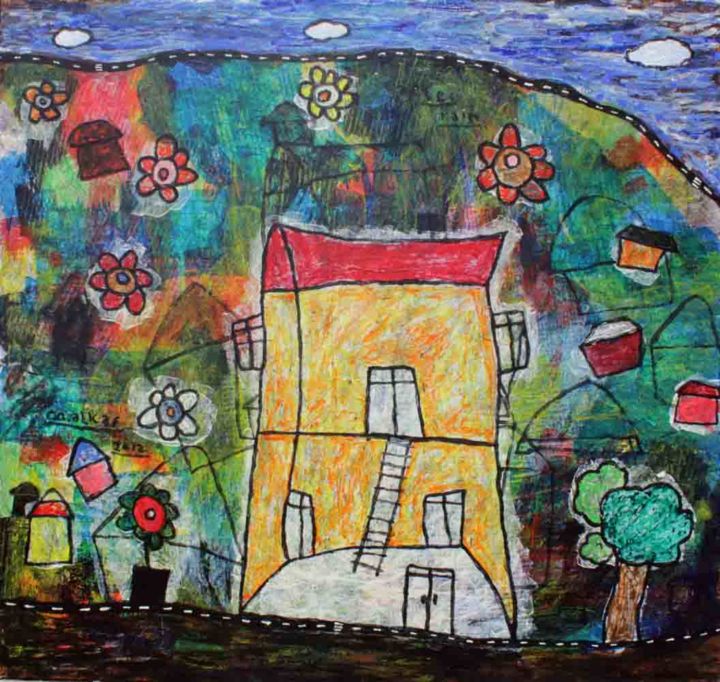
©2012 Boy Alkaf
Famous Contemporary Artists
As we delve into the vibrant realm of contemporary art, we encounter an array of artists who shape this dynamic field. Each a master in their medium - painting, sculpture, photography, drawing, printmaking, textile, or digital art - they push artistic boundaries, reflecting our era and challenging perceptions. Let’s explore these remarkable contributors and their groundbreaking works.
1. Gerhard Richter - Known for his multi-faceted approach to painting, Richter challenges the boundaries of the medium, masterfully oscillating between abstract and photorealistic styles. His works, whether featuring squeegee-pulled pigments or blurred photographic images, engage in a fascinating dialogue with perception.
2. Jeff Koons - A significant figure in contemporary sculpture, Koons crafts monumental pieces that explore themes of consumerism, taste, and popular culture. His iconic balloon animals, constructed in mirror-polished stainless steel, captivate with their playful yet profound commentary.
3. Cindy Sherman - An acclaimed photographer, Sherman uses her lens to explore identity and societal roles, particularly of women. Renowned for her conceptual self-portraits, she assumes myriad characters, pushing the boundaries of photography as a medium of artistic expression.
4. David Hockney - Hockney, with his prolific output spanning six decades, is a pivotal figure in contemporary drawing. His bold use of color and playful exploration of perspective convey an intoxicating sense of joy and an unabashed celebration of life.
5. Kiki Smith - An innovative printmaker, Smith’s work explores the human condition, particularly the female body and its social and cultural connotations. Her etchings and lithographs speak to universal experiences of life, death, and transformation.
6. El Anatsui - A master of textile art, Anatsui creates stunning tapestry-like installations from discarded bottle caps and aluminum scraps. These shimmering, flexible sculptures blend traditional African aesthetic with contemporary art sensibilities, speaking to themes of consumption, waste, and the interconnectedness of our world.
7. Rafael Lozano-Hemmer - A leading figure in digital art, Lozano-Hemmer utilizes technology to create interactive installations that blend architecture and performance art. His work, often participatory in nature, explores themes of surveillance, privacy, and the relationship between people and their environments.
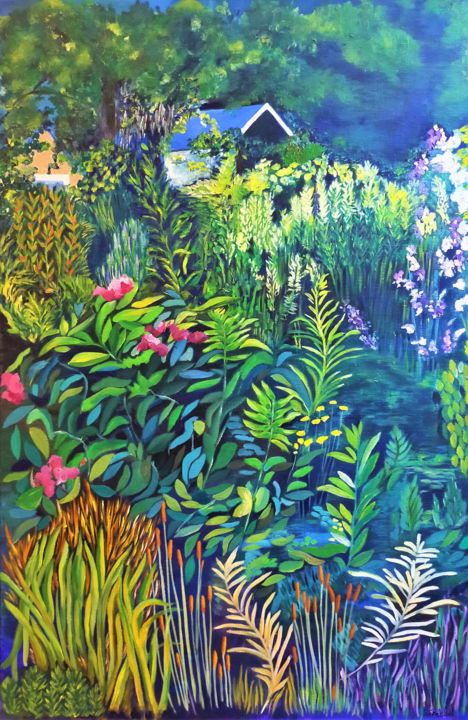
©2020 Catherine Senechal Kunstenaar vertegenwoordigd door Galerie Libre Est L'Art
Notable contemporary artworks
The contemporary art landscape is a dynamic patchwork of diverse expressions and groundbreaking ideas, each artwork a unique dialog with its audience. Here are a selection of some renowned contemporary artworks, spanning various media such as painting, sculpture, photography, drawing, printmaking, textile art, and digital art, that have profoundly influenced this vibrant movement.
"Cloud Gate" by Anish Kapoor, 2006 - This monumental stainless steel sculpture, also known as "The Bean," mirrors and distorts the Chicago skyline and onlookers in its seamless, liquid-like surface, creating an interactive experience that blurs the line between the artwork and the viewer.
"Marilyn Diptych" by Andy Warhol, 1962 - An iconic piece of pop art, this silkscreen painting features fifty images of Marilyn Monroe. Half brightly colored, half in black and white, it reflects the dichotomy of celebrity life and its influence on popular culture.
"Rhein II" by Andreas Gursky, 1999 - This photographic artwork, a digitally-altered image of the Rhine River, is celebrated for its minimalist aesthetic. It strips the landscape to its bare essentials, invoking a sense of tranquility and vastness.
"Black Square" by Kazimir Malevich, 1915 - A revolutionary painting in the realm of abstract art, this piece, featuring nothing more than a black square on a white field, challenges traditional notions of representation, symbolizing a new era in artistic expression.
"Puppy" by Jeff Koons, 1992 - This giant sculpture, a West Highland Terrier blanketed in flowering plants, explores themes of innocence, consumer culture, and the interplay between high art and kitsch. It’s a delightful blend of traditional sculpture and garden craft.
"Re-projection: Hoerengracht" by Ed and Nancy Kienholz, 1983-1988 - A room-sized tableau representing Amsterdam’s red-light district, this work combines elements of sculpture, painting, lighting, and found objects. It engages viewers in a stark commentary on commodification and objectification.
"Untitled" (Your body is a battleground) by Barbara Kruger, 1989 - This photomontage, combining black-and-white photography with impactful text, explores issues of feminism, identity, and power. Its potent, confrontational message is a prime example of the power of text in contemporary visual art.
"For the Love of God" by Damien Hirst, 2007 - This sculpture, a platinum cast of a human skull encrusted with 8,601 diamonds, probes themes of mortality, value, and the human fascination with luxury and decadence. It’s a compelling blend of macabre and magnificence.
"Physical impossibility of Death in the Mind of Someone Living" by Damien Hirst, 1991 - This artwork, featuring a tiger shark preserved in formaldehyde, blurs the line between traditional sculpture and biological specimen. It prompts viewers to contemplate mortality and nature’s ferocity.
"One and Three Chairs" by Joseph Kosuth, 1965 - A piece of conceptual art, it presents a physical chair, a photograph of a chair, and a dictionary definition of a chair, thus exploring the relationship between language, picture, and referent in art.
These pieces, in their diversity, exemplify the rich tapestry of contemporary art, each piece a unique commentary on our world and a testament to the limitless potential of creative expression.

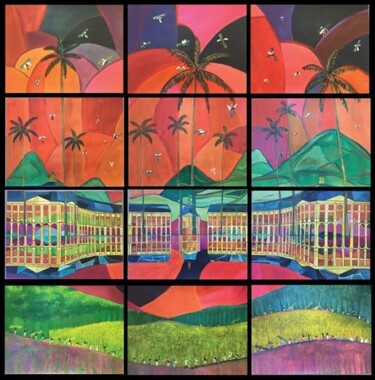
Pierre Carret
Acryl op Papier | 76,8x78,7 in
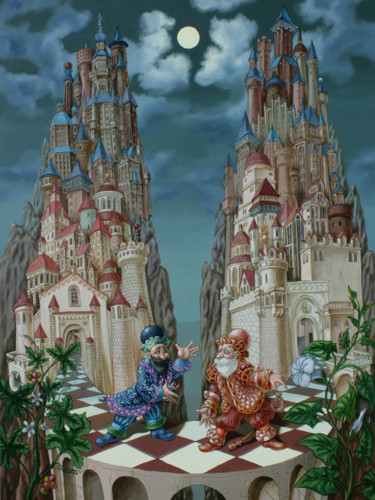
Victor Molev
Olie op Canvas | 39,8x29,9 in
